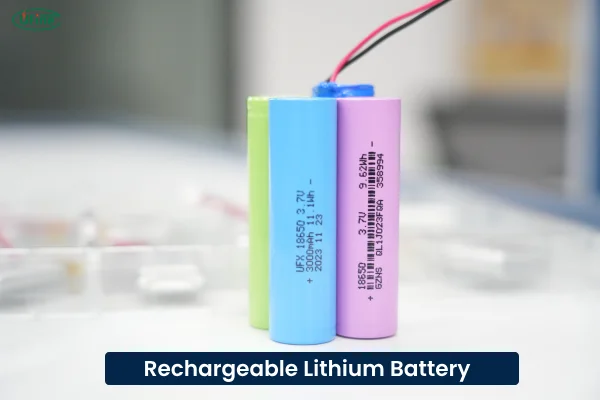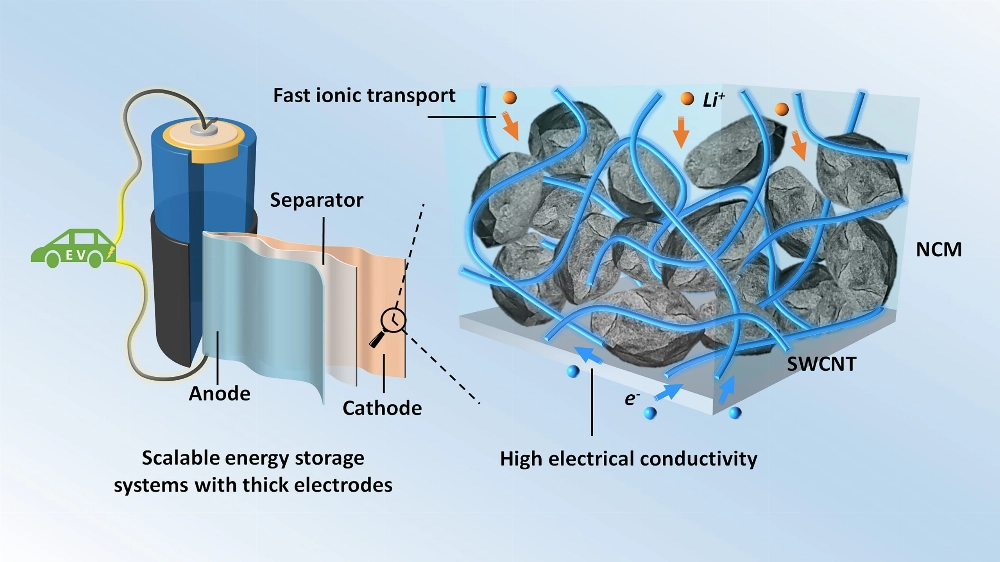Lithium-ion batteries are the cornerstone of modern technology, powering everything from smartphones and laptops to electric vehicles. However, these modern marvels have a hidden vulnerability: they can degrade if left unused for extended periods. This phenomenon, known as “deep discharge,” is both frustrating and costly, ultimately leading to batteries that seem damaged or unusable.

In this article, we will delve into the science behind lithium-ion battery degradation due to inactivity. We will explore how these batteries work, why they fail when not in use, and provide practical tips for maintaining their health, preventing damage, and even revitalizing them where possible.
Part 1. Why Do Lithium Batteries Fail When Not in Use?
The problem lies in the nature of lithium-ion batteries. Unlike traditional lead-acid batteries, which can be stored unused for long periods, lithium-ion batteries self-discharge over time. This means they lose their charge even when not actively powering a device, a process caused by internal chemical reactions.
The Chemistry of Self-Discharge:
Inside a lithium-ion battery, electrons are constantly flowing between the anode (positive electrode) and the cathode (negative electrode) through an electrolyte. This movement of electrons generates an electric current that powers our devices. However, even when not connected to a device, lithium ions continue to slowly migrate within the electrolyte. This constant migration gradually reduces the battery capacity.
Self-Discharge Rate:
The self-discharge rate of a lithium-ion battery depends on several factors, such as the battery’s chemistry, age, temperature, and manufacturing process. Typically, lithium-ion batteries have a self-discharge rate of around 5% per month, meaning they lose approximately 5% of their charge every 30 days. While this loss may seem minimal at first, it can accumulate over time, leading to a significant reduction in battery capacity.
Part 2. The Effects of Long-Term Disuse on Lithium-Ion Batteries
When a lithium-ion battery’s charge drops below a critical threshold, it enters a state known as “deep discharge.” This is a critical point where the battery’s internal structure begins to suffer irreversible damage. It’s like a fragile ecosystem; once unbalanced, it’s hard to restore.
The Consequences of Deep Discharge:
- Electrolyte Crystallization: The electrolyte, responsible for facilitating the movement of lithium ions, can crystallize when the battery is deeply discharged. These crystals impede the flow of ions, severely impairing the battery’s ability to charge and discharge.
- Formation of Solid Electrolyte Interphase (SEI) Layer: The SEI layer is a protective film that naturally forms on the anode during the first few charging cycles. However, deep discharge can cause the SEI layer to thicken, reducing its effectiveness, which in turn leads to increased internal resistance and decreased battery performance.
- Damage to Electrode Materials: Deep discharge can significantly degrade the electrode materials, especially the anode. This damage reduces the battery’s ability to store and release lithium ions, leading to a decline in overall capacity and performance.
Beyond Repair:
Once a lithium-ion battery enters a deep discharge state, the damage can be so severe that the battery can no longer hold a charge or accept a new one. The internal components may be damaged beyond repair, making it crucial to prevent deep discharge to maintain the battery’s health and longevity.
Part 3. How Often to Charge Lithium Batteries During Storage?
To prevent deep discharge and prolong the life of your lithium-ion batteries, regular charging is essential. The exact frequency of charging depends on usage and storage conditions, but a general recommendation is to charge the battery to around 40-60% every few months. This helps maintain the battery in a healthy state and prevents it from dropping into a deep discharge state.
By following these simple practices, you can significantly extend the lifespan of your lithium-ion batteries, ensuring their long-term reliability and performance.
KHZH: Maintaining the health of your lithium-ion batteries ensures you get the most out of your modern tech devices. Follow these tips to prevent premature failure and maximize battery lifespan.
For more information on the performance of lithium-ion batteries under different conditions, check out our insights on how long a 3.7V lithium-ion cell lasts, and the key factors affecting battery life.
The Importance of Regular Charging of Lithium-Ion Batteries
When it comes to maintaining the health of lithium-ion batteries, regular charging is key. Even if you don’t use your batteries often, it’s recommended to charge them every few months. This habit is essential in ensuring battery longevity and maintaining optimal performance.
The Importance of Regular Charging:
1. Maintaining Adequate Charge Levels
Regularly charging your batteries ensures that they maintain a sufficient charge level, preventing the damaging effects of deep discharge. This helps to avoid the negative consequences of batteries sitting at low charge levels for extended periods.
2. Reducing Internal Resistance
Regular charging helps to maintain the integrity of the solid electrolyte interphase (SEI) layer. Reducing Internal Resistance (which improves efficiency)
3. Extending Battery Life
Overall, Extending Battery Life. Regular charging can significantly extend a battery’s lifespan by preventing deep discharges. This allows you to maximize its full potential, extending its usable life.
Finding the Right Balance:
While regular charging is essential, it’s equally important to avoid overcharging. Overcharging can be harmful to batteries. Be sure to follow the manufacturer’s recommendations regarding charging times and current. Modern lithium-ion batteries often have built-in circuitry to prevent overcharging, but it’s always safest to follow best practices.
Reviving Deeply Discharged Lithium-Ion Batteries
If your lithium-ion battery has been deeply discharged due to neglect, there’s still a chance it can be recovered. However, the success of the revival largely depends on the extent of the damage and the battery’s age.
Recovery Methods:
1. Slow Charging
Try charging the battery for an extended period using a low-current charger. This slow, steady charge can sometimes help to restore the battery’s charge and revive its internal components.
2. Specialized Chargers
Some chargers are specifically designed to recover deeply discharged batteries. These chargers follow specific charging protocols that gently attempt to reactivate the battery. This minimizes the risk of further damage.
3. Professional Help
If the battery is severely damaged or you’re unsure how to proceed, it’s best to consult a qualified technician. With the right equipment and expertise, they can assess the battery’s condition and provide the best course of action.
Patience is Key
Reviving a deeply discharged lithium-ion battery can take time. It may require days or even weeks of careful, low-current charging to recover some of the battery’s capacity. Be patient and persistent, as the process can be slow but rewarding.
Is it Possible to Charge a Completely Dead Lithium Battery?
Sometimes, a completely dead lithium-ion battery can be revived, but it’s not always guaranteed. Think of it like trying to jump-start a dead car battery—it might work, but success is unlikely. To prevent this scenario, it’s best to charge your batteries regularly, even when you’re not using them.
How Can You Revive a Dead Lithium-Ion Battery?
Unlike car batteries, you can’t simply jump-start a dead lithium-ion battery. These batteries require specialized charging methods. If the battery is too low to charge, you’ll need to use a special charger or contact a battery expert. They’ll have the right tools and techniques to attempt to safely revive the battery.
How to Maintain Unused Lithium-Ion Batteries
To avoid the inconvenience of a dead lithium-ion battery, it’s crucial to take proactive steps to prevent deep discharge. Here are some practical tips to keep your batteries healthy and ready to use:
1. Regular Charging
Even if you’re not using the battery, charge it every few months. This is one of the most effective ways to prevent deep discharge and prolong the battery’s lifespan.
2. Proper Storage
Store your batteries in a cool, dry environment, away from high temperatures and direct sunlight. High temperatures can accelerate self-discharge and lead to internal battery damage.
3. Avoid Overcharging
Avoid overcharging, as this can cause damage. Always follow the manufacturer’s recommendations regarding charging times and limits to ensure the best possible care for your battery.
By adhering to these tips and practices, you can maximize battery life, efficiency, and performance.
At KHZH, we’re dedicated to providing you with the best lithium-ion battery maintenance solutions, ensuring your batteries last for a longer lifespan.

Recommended Charging Time and Current
Using a Battery Management System (BMS)
Many modern batteries are equipped with an integrated Battery Management System (BMS) that monitors charging and discharging cycles, preventing over-discharge. If your battery has a BMS, be sure to take full advantage of it to maintain optimal performance and longevity.
Conclusion
Lithium-ion batteries have become the primary power source for our everyday devices. By understanding how battery self-discharge and over-discharge work, and by following proper maintenance practices, you can extend the life of your batteries and prevent premature failure. Regular charging, proper storage, and preventative maintenance are crucial for maintaining optimal battery condition for years to come.







